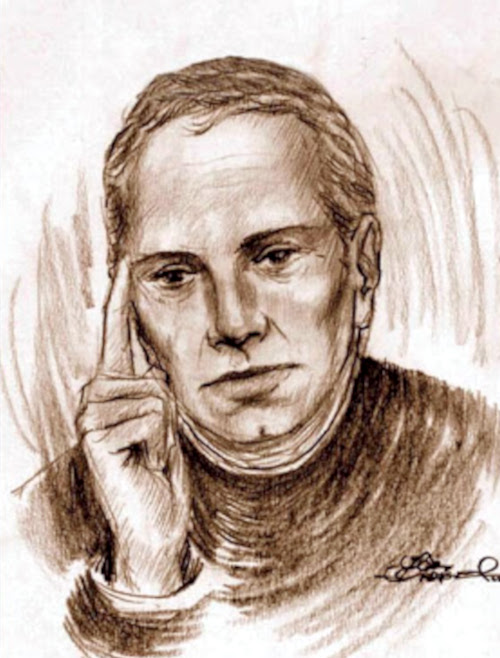Jacinto de Evia (Guayaquil, circa 1629 – 17??) was a priest and poet from the Spanish colonial period in Guayaquil, in what is now Ecuador. He is considered the first erotic poet of Ecuadorian literature because of poems he wrote in his younger years which he published in a book entitled, “Ramillete de Varias Flores Poéticas“ (Spain, 1675). The book also contains poems by his mentor Antonio de Bastidas and Hernando Domínguez Camargo. Some year prior to 1650, he traveled to Quito to study at the seminary school of San Luis, of the Society of Jesus, where he became a pupil of the great poet Antonio de Bastidas.
Early Life and Education
Jacinto de Evia was a Guayaquileño poet and priest who was born in Guayaquil, Ecuador, in 1629. The exact year of his death is unknown but is believed to be in the early 18th century. He is recognized as one of the first poets from Ecuador, alongside Juan Bautista Aguirre. Evia’s early education began with his mother, and in 1645, he traveled to Quito to study at the San Luis Seminary College, which was run by the Society of Jesus. It was there that he became a disciple of the renowned poet Antonio de Bastidas, a pivotal influence on Evia’s poetic vocation. Evia received a doctorate from the University of San Gregorio, also known as Loyola University, in Quito in 1657.
Evia eventually became ordained as a priest and obtained his doctorate in the Arts from the University of San Gregorio in Quito on May 20, 1657. After completing his studies, he spent some time in Madrid in the 1670s, overseeing the publication of the poems of Father Bastidas, as well as his own works and those of Hernando Domínguez Camargo. The result of this effort was the publication of “Ramillete de Varias Flores Poéticas” (1675), which can be considered the first book of Ecuadorian poetry.
Notable Literary Works of Jacinto de Evia: Poems, Elegies, and Prose
Jacinto de Evia’s notable literary works encompass a range of themes and genres. His most renowned publication, “Ramillete de Varias Flores Poéticas” (1675), is a collection of poems divided into sections known as “Flores.” Within this work, the “Flores fúnebres” exclusively feature poems by Bastidas, while the “Flores heroicas y líricas” contain Evia’s own compositions. Evia’s poetic voice truly emerges in the sections dedicated to “Flores amorosas” and “Flores burlescas y satíricas,” exploring themes of love, satire, and humor. Another notable work is the poem “La Gitana al Niño Jesús,” which revolves around the encounter between a gypsy and the infant Jesus, expressing devotion and reverence. Apart from poetry, Evia wrote a prose story titled “El Sueño de Celio” (Celio’s Dream). His elegies, “A la Temprana Muerte de Don Baltasar Carlos, Príncipe de España” and “A la Desaparición de la Reina Doña Isabel de Borbón,” mourn the premature death of Prince Baltasar Carlos and commemorate the passing of Queen Isabel de Borbón, respectively, conveying sentiments of sorrow and reverence.
Legacy and Style
Jacinto de Evia is considered the foremost poet of Ecuador’s Baroque period. His poetic style is characterized by its ornate and artificial qualities, which drew criticism from Menéndez y Pelayo, who described him as “monumento de hinchazón y pedantería” (a monument of inflation and pedantry). However, when Evia abandoned these artificial and solemn elements, he demonstrated skill in composing beautiful stanzas in smaller poetic forms.
Evia’s contributions to Ecuadorian literature extended beyond his artistic merits. He holds the distinction of being Ecuador’s first erotic poet, a risky endeavor during his time. His “Flores amorosas” (“Amorous Flowers”) offered an uneven collection of erotic poetry, with some verses that became popular religious poems, such as the widely recited and sung “Dame una limosnita / Niño bendito, / dame las Buenas Pascuas / en que has nacido” (“Give me an alms, Blessed Child, grant me the Good Easter in which you were born”).
Furthermore, Evia’s talent extended to humor and satire, as showcased in his “Flores burlescas” (“Burlesque Flowers”). He also wrote “loas” for the theater, a genre of short poetic works praising specific individuals or themes.
Jacinto de Evia’s work, though characterized by its baroque exuberance and occasional pedantry, left an indelible mark on Ecuadorian literature. He explored various themes, including love, death, and religious devotion, and his contributions set the stage for future literary developments in the country.
Works
- Ramillete de Varias Flores Poéticas (1675)
- La Gitana al Niño Jesús
- Romance Pastoril
- El Sueño de Celio
- A la Temprana Muerte de Don Baltasar Carlos, Príncipe de España
- A la Desaparición de la Reina Doña Isabel de Borbón

